Women Artists Dominate the 11th Berlin Bienniale

Curated by a “four voices constellations” of three South American women and only one man, this year the Berlin Biennial courageously elects most of its space to narrate the stories of femininity or queer-identity in marginalised communities.
As one of the very first Biennials after the global lockdown (having originally been postponed from June to September), this 11th Berlin Biennale presents a varied program across its four venues (Martius Gropius-Bau, KW Institute for Contemporary Art, ExRotaPrint and daadgalerie), with a good balance between different media, sensual environments and more conceptual presentations.
Despite these anxious times, the Biennial doesn’t indulge in easy solace for the visitor, but rather elects a radically socially and politically engaged presentation, dealing with poignant issues of our time, and recent past. A special focus is given to South America, with works aiming to unveil explicit conflicts and silent suffering between racial and gender-based injustices, and post colonial problems, which have been just exasperated by this pandemic.
The curatorial team, which includes personalities all involved between art, curating and sociology, expressly admitted that this Biennale ‘began by asking how to celebrate the complicated beauty of life as the world burns around us.’
Here are some women artists included, who we loved for their works and their strong, brave voices in sharing their views.
The Biennial is on view until November 1st in Berlin.
FLORENCIA RODRIGUEZ GILES, Biodelica (2018)

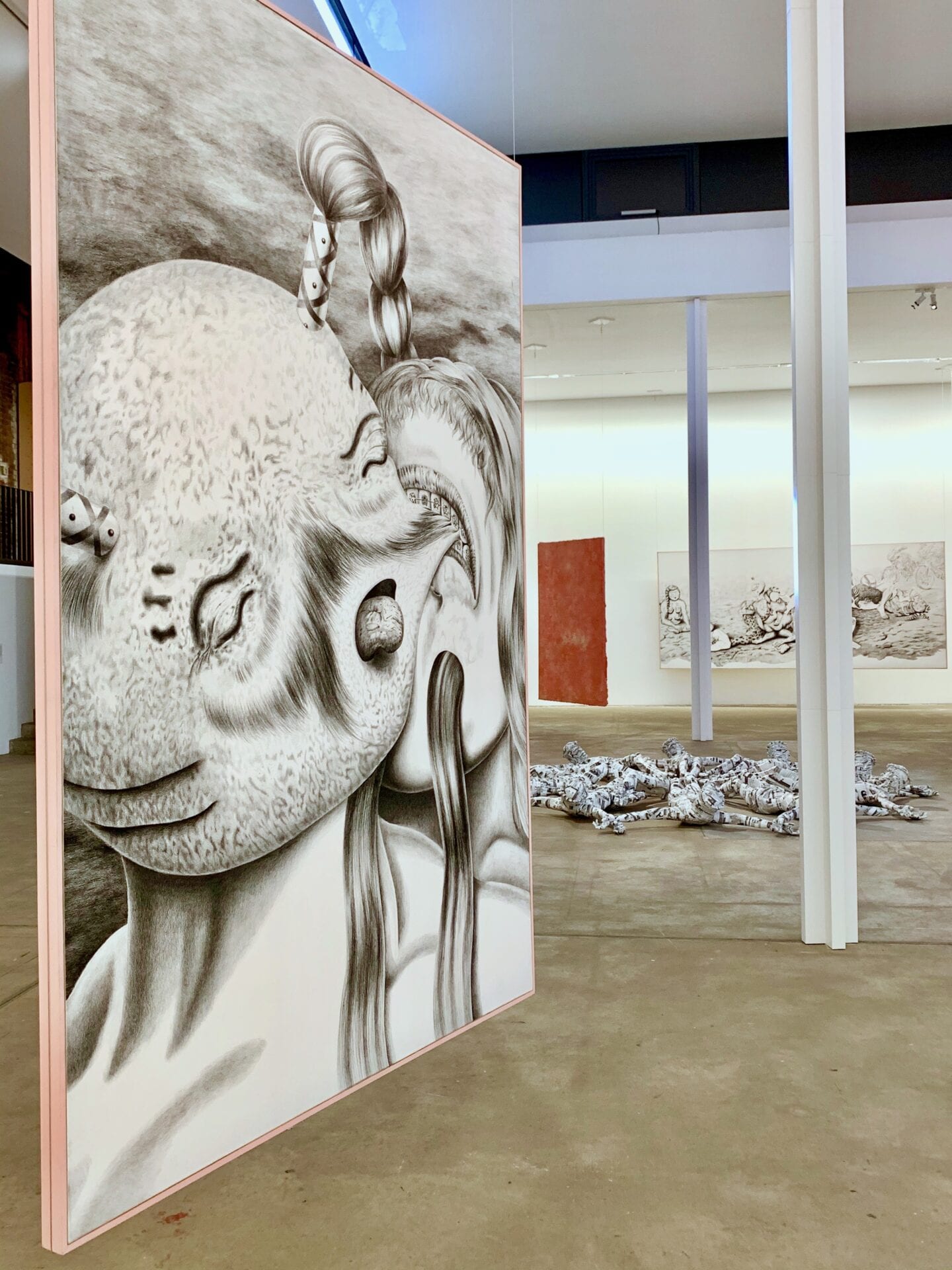
Large black-and-white pencil drawings with a pink-gesturally painted background present heroic-scale scenes with weird gender-free creatures. Simultaneously referring to greek mythology and indigenous traditions, these figures encourage some animistic spirituality and primordial attitude of cooperation with nature.
Florencia Rodriguez Giles (Argentina, b.1978) has already on her CV major museums show at the Museo Nacional Centro de Arte Reina Sofía, Madrid (2018), Palais de Tokyo, París (2016) and Museum of Modern Art Buenos Aires (2013). She’s represented by Paris-based Bendana-Pinel Gallery and Ruth Benzecar, Buenos Aires.
MARIELA SCAFATI, Movilización [Mobilization] (2020)
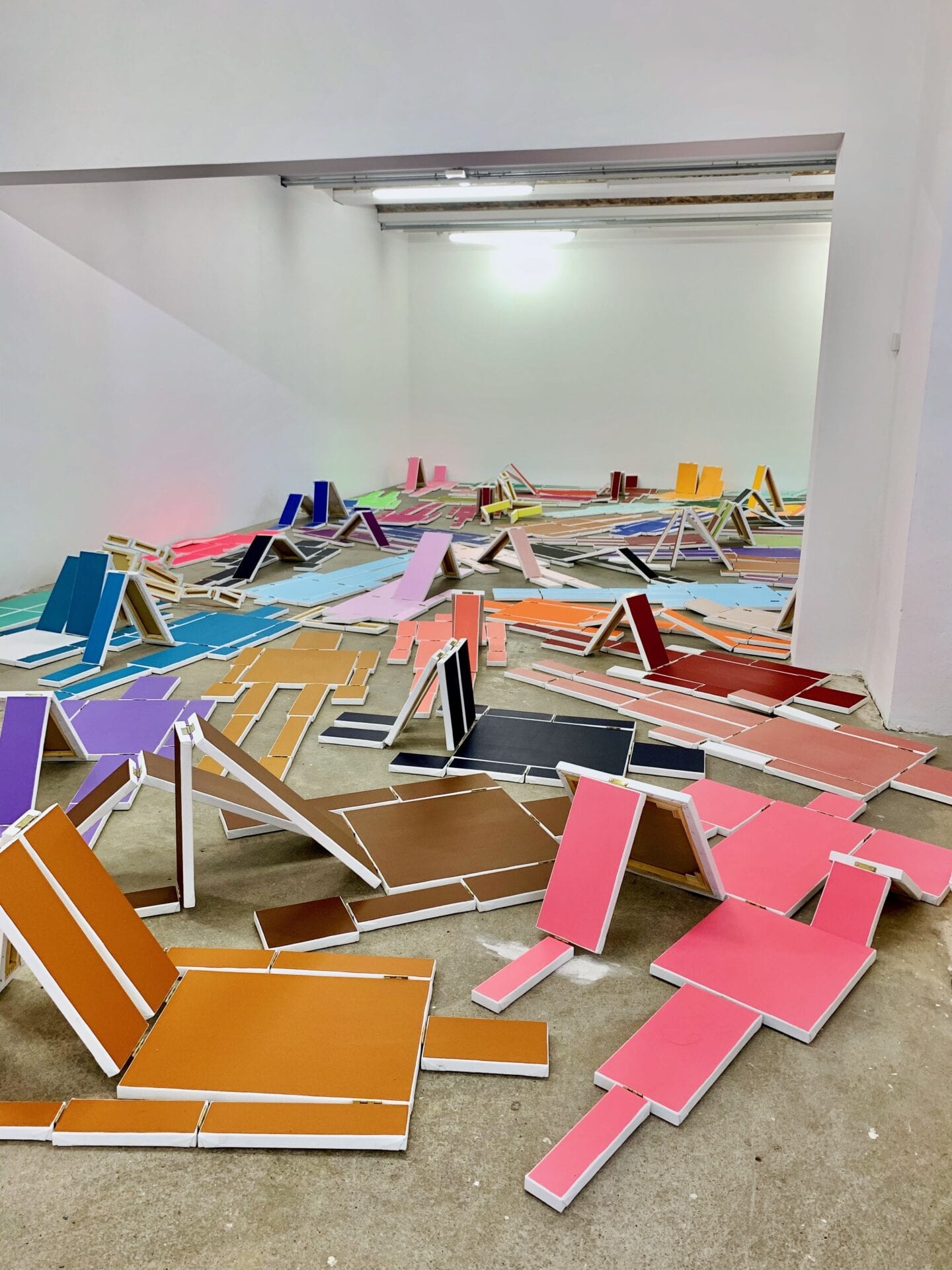
Mariela Scafati (Argentina, b.1973) reinvents Modernism and its formal conventions to evoke choreographies of utopian societies.
As painter, printmaker, and queer activist, she plays with colors and shapes to create an “abstraction in action”. In this sense, her work follows the heels of previous politically and socially engaged developments of Modernism in South America, as with the Brazilian “Neo Concrete art” of Pape and Oiticica.
Since it was first conceived, the installation she’s presenting in Berlin has been modified in response to the seismic social shifts that have marked this period, with conflicts and protests exacerbated by the pandemic. In fact, the original composition consisted of upright bodies in some sort of demonstration, while now it comprises 65 bodies prostate horizontality, to pay homage to those unable to rise up on their own, but also to acknowledge a potential political fragility of an “oblique form of imagining a [better] tomorrow,” as described by Nicolás Cuello.
Represented by Isla Flotante (Buenos Aires), Mariela was presented for the first time at Positions Art Basel Miami in 2017, which was followed by her intervention at the Museo de la Cárcova in the following Art basel City Buenos Aires in 2018.
GALLI, Untitled (1989)
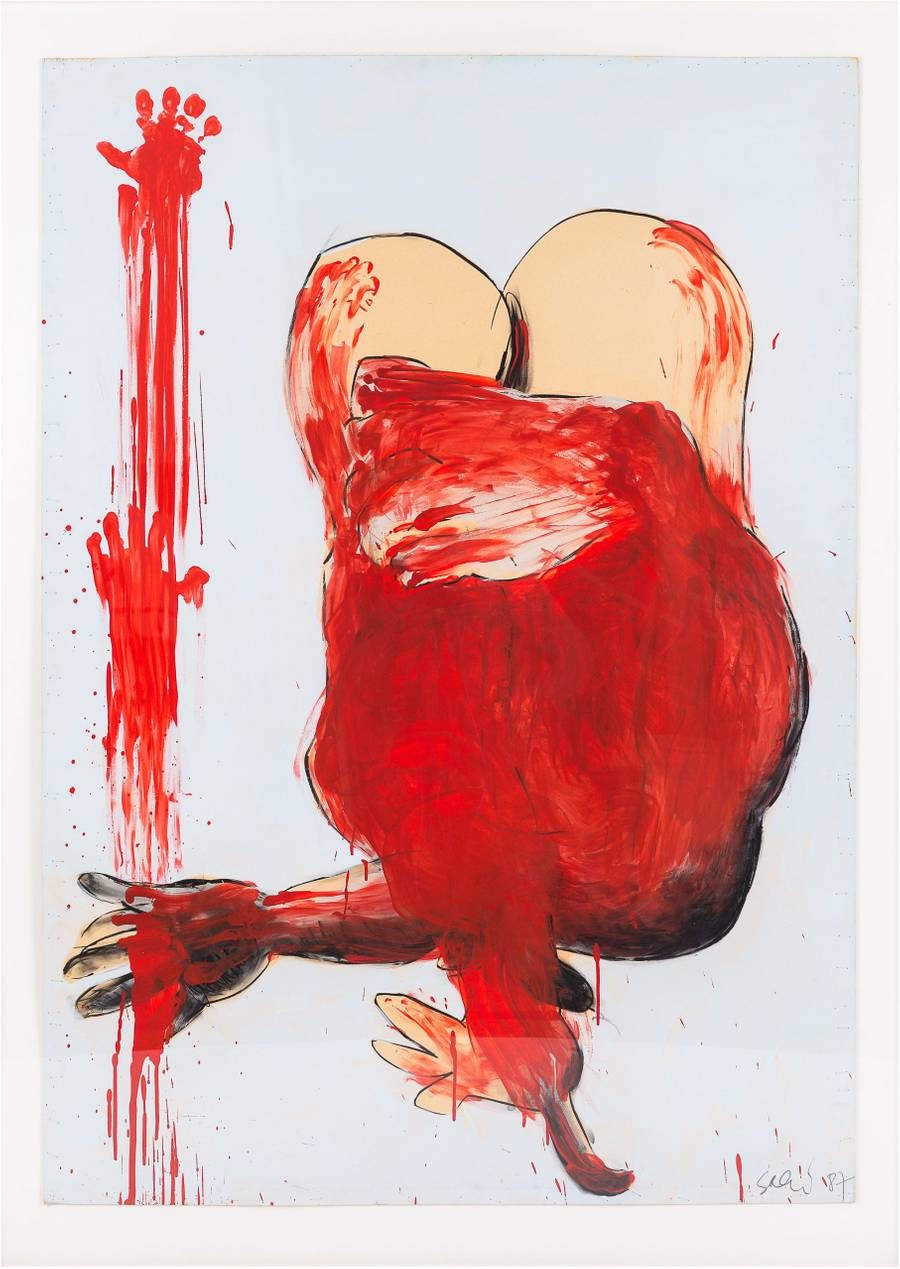
Some tumultuous magmatic spirit animates Galli’ works (Germany, b.1944) which preserve all the freely rebellious erupting energies of the West Berlin art scene from the late 1970s and early 1980s. Fragmented human parts and objects meld together in these raw paintings, connecting the artist also with the brutal expressive freedom of the German Brucke group, ‘The New Fauves.’
Art historian Thomas Deecke writes: “Her protagonists are figures of her overflowing imagination… they appear to be marked by the circumstances of life and their fates; they show themselves exposed to the injustices of life in often bold gestures and anatomically highly questionable contortions.”
Still, she’s a woman from the West Berlin scene of these years, we are regrettably just now valuing and acknowledging her role as artist and activist–she wasn’t so wrong in being so angry at the time.
MALGORZATA MIRGA-TAS, From the series Romani Kali Daj (2019-20)
This colorful series of patchwork screens titled Romani Kali Daj [Roma Madonna, 2019/20] portrays daily expressions of femininity, captured in different stages of life.
Małgorzata Mirga-Tas (Poland, b.1978) is probably one of the very first voices coming to the contemporary art scene from the the Bergitka Roma community, a Roma ethnic sub-group, living mostly in Poland. In this sense, as other artists in this Biennial, she’s bringing the unique voice and gaze of women from another marginalized community, yet to be told in the art world. Her work is in fact deeply rooted in the traditions and values of her community, fleshing out a powerful portrait of its women. For instance, patchwork is a method of image-making which she applies in these works, as well as in the workshops she leads with children and youth from Roma communities.
Somehow, her works also unexpectedly connect with the concept of “femmage” that Miriam Schapiro or the story-quilt by Faith Ringoold explored, in revaluing originally feminine-gendered practices as tools of sincere woman-signed representations. Repurposing collage and craft-work within master works, she values these culturally and gender-charged “applied arts” into the contemporary art world. Surrounded by objects dear to them, these women are shown in moments of reflection, alone or with family, as witnesses to history who link the past with the present.
Mirga-Tas was recently resident at Villa Romana, in Rome, and she’s currently represented by Galeria Szydlowki in Warsaw, Poland.
BRENDA FAJARDO, Sila Raw ay Nanlaban; Kaya Sila Namatay? [They Said They Fought Back; So They Died] (2018)
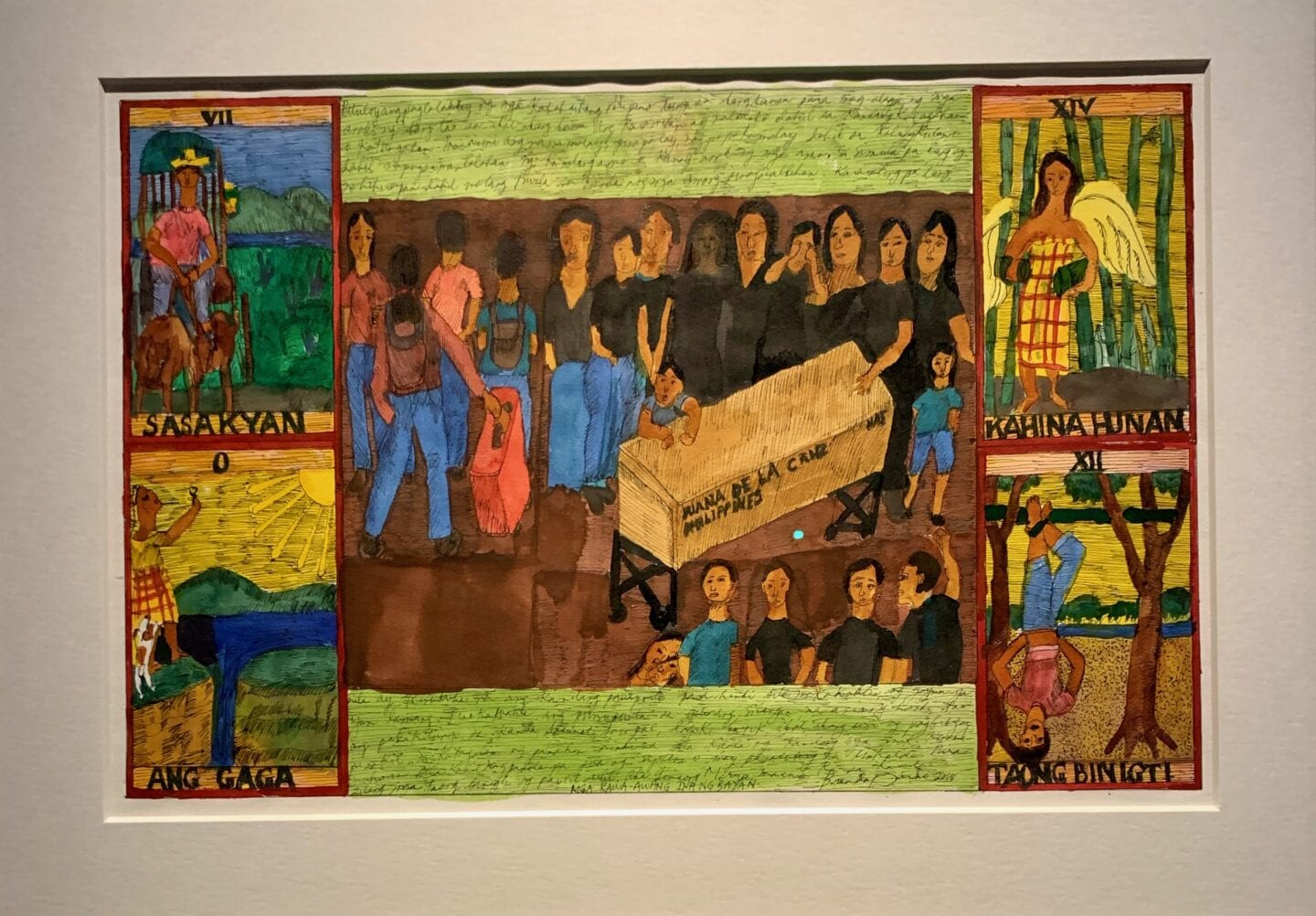
Philippines-born artist Brenda Fajardo (Philippines, b.1940,) depicts, and denounces without filters the life of young Filipino women. These young girls, in fact, often forced by their parents to depart from their country in search of fortune abroad, by taking care of other’s people children in other countries. However, as investigations have revealed, especially when sent to the Middle East, most of them die either for depression or purposely killed, often having been exploited and raped by their employers. Appropriating the traditional schema of the tarot, where a central image bordered with a reading of the event, the artist flesh out the plight of Filipinos and their women, in a persistent corruption in the country.
ZEHRA DOGAN, Xêzên Dizî [The Hidden Drawings] (2018–20)
This poignant series of drawings on paper by Kurdish artist, activist, and journalist Zehra Doğan (Turkey, b.1989) tells us the dramatic story of Kurdish resistance, back in 2015.
The work describes the agony when the rebellion was tragically repressed with an illegal lockdown, and the Turkish army, special police forces, and paramilitary killed hundreds of people, including civilians, forced hundreds of thousands from their homes, and destroyed major Kurdish cities and their historical neighborhoods.
Originally Doğan decided to make a painting about the events, which led her to be imprisoned for “terrorist propaganda”, after the images started to circulate on social media. At the time, famous street artist Banksy wanted to show solidarity to the artist, realizing a monumental Mural on Bowery Wall, in New York.
However, during this period in jail Doğan started to work on this incredible graphic novel realized in Kurmancî Kurdish, a style which recalls dengbêj narrative forms, an ancient tradition of oral storytelling in Kurdish society used to communicate history across the generations and keep the mostly unwritten language alive.
As a poignant act of both commemoration and rebellion, the novel becomes an important manifesto of all the Kurdish struggle in Turkey began in the 1980s.
The brave artist is currently having a show at Prometeo Gallery, Milan.
ARPILLERAS, made by Chilean women during the dictatorship and part of the Museo de la Solidaridad Salvador Allende (MSSA)


An interesting room of the Berlin Biennale at the Gropius Bau presents another story worth telling, the one about The Museo de la Solidaridad (1971–73). Created as an act of political solidarity with the struggle of the Chilean people when artists from all over the world donated works in response to the dictatorial turn in the country, this initiative was part of a small-scale counter-information campaign called Operación Verdad (Operation Truth), aiming to defend Salvador Allende’s presidency and promote “revolution without arms.”
But, how can a museum be a weapon? Can art be used as an effective revolutionary tool? If we consider these Arpilleras, it might be true: in fact, these poignant tapestries were made by Chilean women during the regime and, as they could more easily circulate and be sent outside as “artisans products”, once clandestinely exported they offered the world the first artistic and authentic depiction of everyday life in Chile during the dictatorship, denouncing the violation of human life, but also to showing people resilience and resistance.
SCHUVINAI ASHOONA, Untitled (2013)
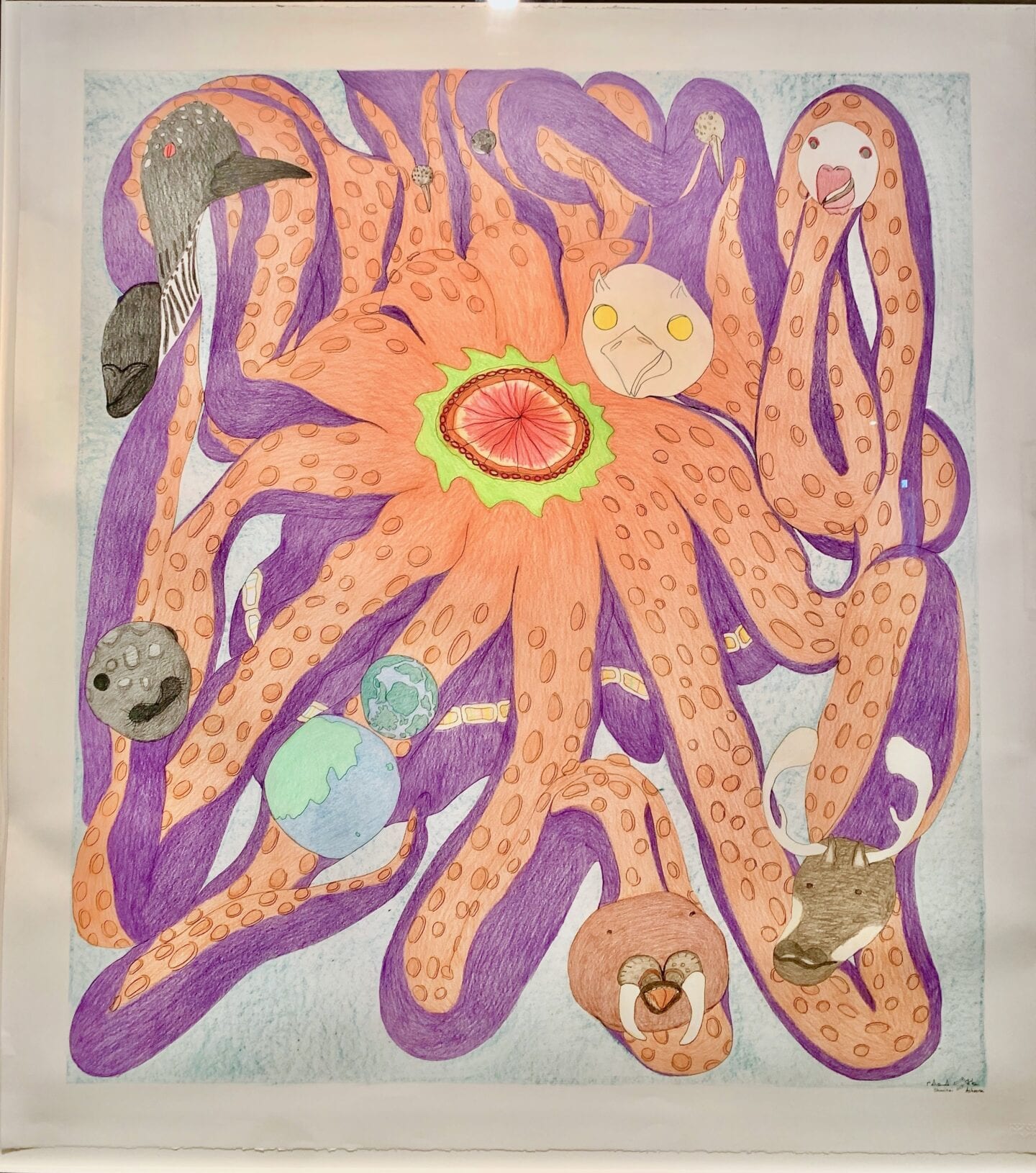
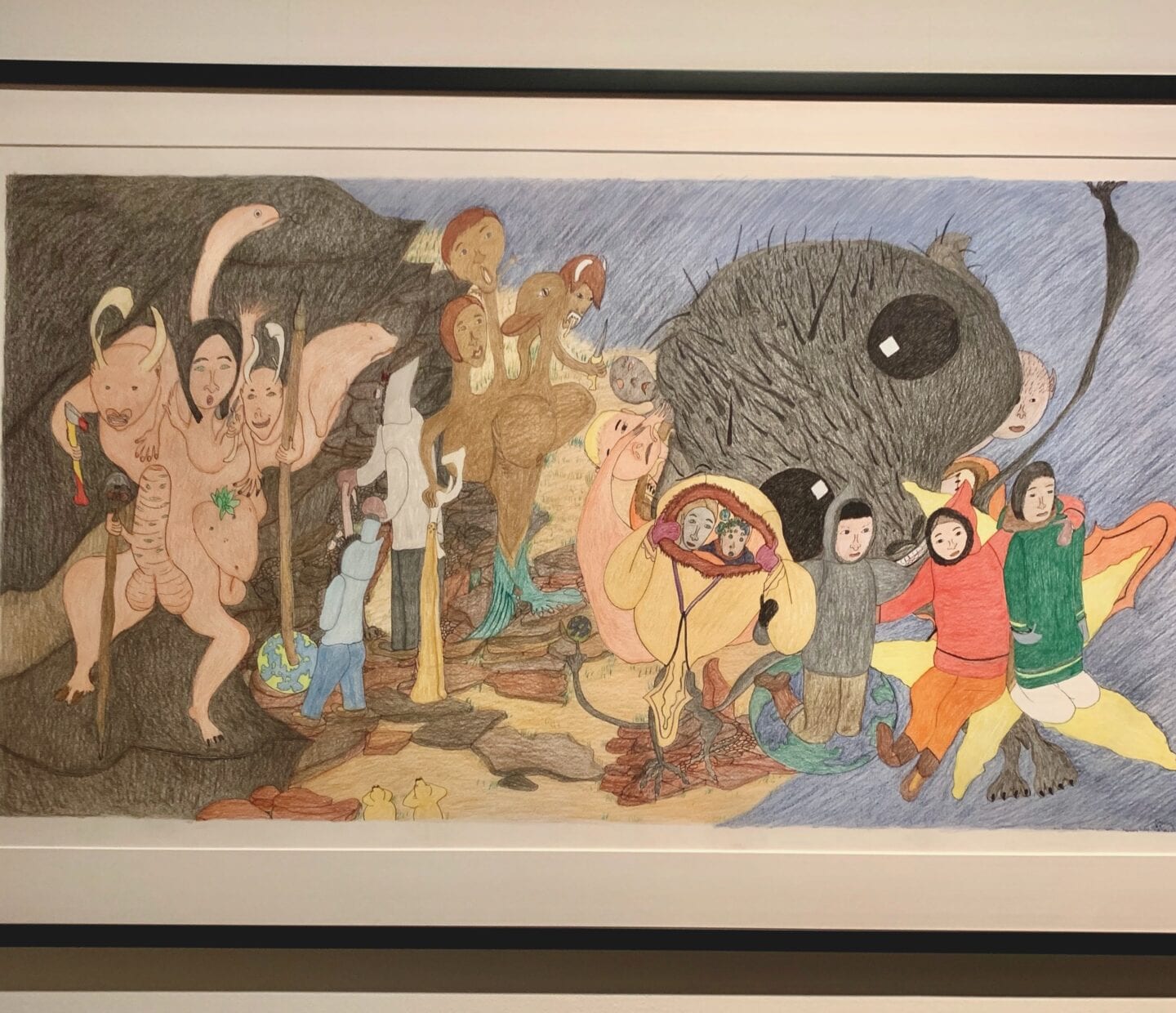
With her very idiosyncratic and dream-like style, Schuvinaai Ashoona (Canada, b.1961) brings to us the traditions and daily scenes from the remote Arctic. Telling about her family’s nomadic life in Canada’s far North and their deep connection with nature and spirituality, these just apparently naive colorful vignettes suggest a different temporality and way to approach life for indigenous populations, which totally departs with today western world. In this sense, she offers us a very different gaze and perspective in woman artistic practice, as we have probably never seen before.
Coming from an Inuk artistic family as daughter of a celebrated well-known sculptor, Kiawak Ashoona, and granddaughter of the late Pitseolak Ashoona, she has already gained large recognition, especially in Canada, with a recent show at the Vancouver Art Gallery. Before that, she had a solo exhibition at The Power Plant in Toronto and the Sobey Art Award in 2006 marking her more international recognition and showing “the potential of daringly original contemporary Inuit art to capture the attention of global audiences”.






